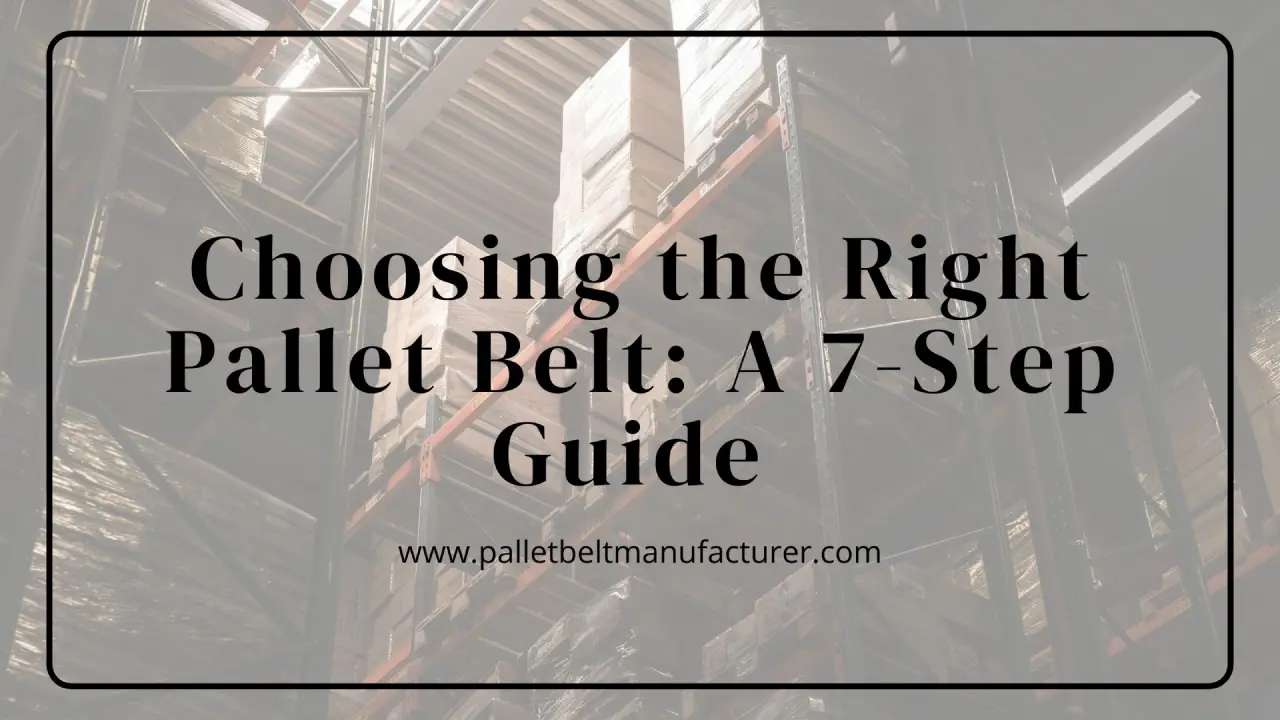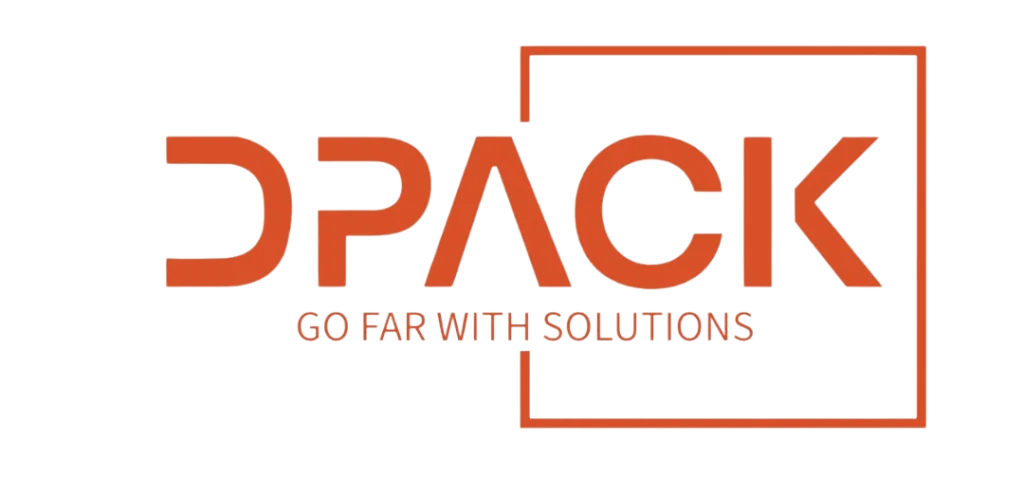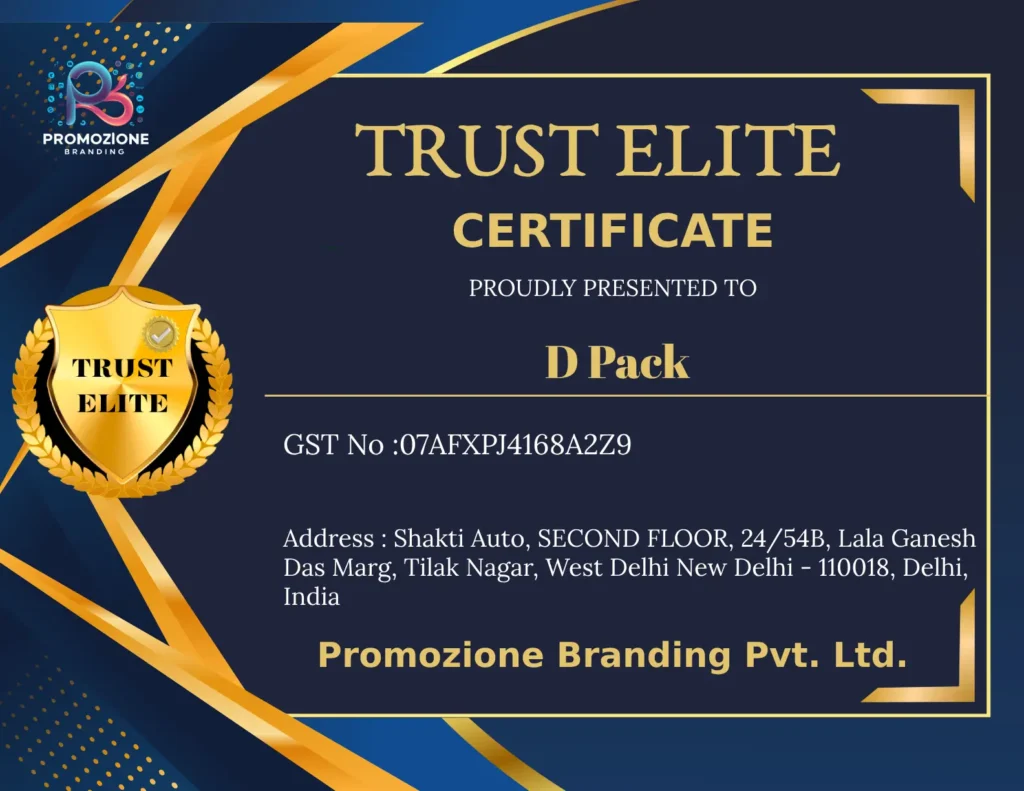
Choosing the Right Pallet Belt: A 7-Step Guide
Introduction: Why Pallet Belts Matter
In today’s fast-paced logistics and manufacturing world, efficiency and reliability are non-negotiable. From e-commerce warehouses to heavy-duty industrial plants, the movement of goods defines productivity. At the center of this movement are pallet belts, which serve as the lifeline of automated and semi-automated conveyor systems.
Choosing the right pallet belt is critical. A wrong choice can lead to breakdowns, operational inefficiencies, higher maintenance costs, and lost revenue. As a trusted Pallet Belt Manufacturer, D Pack has prepared this comprehensive 7-step guide to help you select the perfect pallet belt for your operations, ensuring smooth, reliable, and cost-effective material handling.
Step 1: Identify Your Application Needs
The first step in choosing a pallet belt is understanding your industry-specific requirements. Each sector has unique conditions, which directly influence belt selection.
- Warehousing & Distribution: Belts should handle boxes, cartons, and mixed packages while maintaining consistent speed and flow.
- Food Processing: Hygiene, cleanability, and chemical resistance are critical. Belts must comply with FDA or EU standards.
- Pharmaceutical Industry: Belts must be contamination-resistant, suitable for cleanroom conditions, and easy to sanitize.
- Heavy Manufacturing (steel, cement, automotive): Belts need high load capacity, abrasion resistance, and durability under continuous use.
Example: An e-commerce fulfillment center handling thousands of packages daily found that standard PVC belts degraded in just six months. By switching to D Pack’s medium-duty belts, designed specifically for high-volume operations, their belt lifespan doubled and downtime reduced by 40%.
Key Takeaway: Clearly defining application needs ensures you receive a customized solution from your Pallet Belt Manufacturer rather than a generic belt that may fail prematurely.
Step 2: Check Load Capacity Requirements
Load capacity is a decisive factor. A belt overloaded beyond its rating will stretch, tear, or fail, causing production halts.
Load-Based Belt Types:
- Light-Duty Belts: Suitable for small retail or light packaging; handles up to 30 kg per meter.
- Medium-Duty Belts: Ideal for FMCG, courier services, and e-commerce; handles 30–70 kg per meter.
- Heavy-Duty Belts: Designed for steel, cement, or automotive industries; handles 100+ kg per meter.
Example: An automotive plant transporting engine blocks (~150 kg each) suffered frequent belt failure. D Pack recommended reinforced rubber-based belts, increasing load tolerance by 200% and eliminating downtime.
Tip: Always consider peak loads, not just average loads, when selecting a belt.
Step 3: Evaluate Material and Durability
The material of the pallet belt determines longevity, wear resistance, and suitability for your operational environment.
Common Pallet Belt Materials:
- PVC Belts: Affordable, flexible, general-purpose use.
- Rubber Belts: Durable, high grip, ideal for heavy-duty loads.
- PU (Polyurethane) Belts: Smooth, hygienic, and FDA/EU-approved; perfect for food and pharma.
- Fabric-Reinforced Belts: Combines flexibility with high tensile strength for challenging conditions.
Case Study: A beverage company used PVC belts in a humid environment; belts cracked and developed microbial growth. Replacing them with food-grade PU belts from D Pack extended lifespan by 3 years and ensured compliance with hygiene standards.
Key Advice: Always consult your Pallet Belt Manufacturer about temperature, chemical exposure, humidity, and abrasion conditions before choosing a belt material.
Step 4: Consider Belt Speed and Efficiency
Belt speed affects throughput, product safety, and wear rate. Selecting a belt that cannot handle required speeds leads to misalignment, product damage, and premature wear.
- High-Speed Belts: 2–3 m/s; used in e-commerce and courier industries.
- Moderate-Speed Belts: 1–2 m/s; standard for most warehouses.
- Variable-Speed Belts: Allows flexibility for facilities with fluctuating operational speeds.
Example: A courier hub faced frequent misalignment with standard belts at high speeds. Switching to reinforced high-speed belts from D Pack improved alignment by 35% and reduced downtime.
Manufacturer Insight: Efficiency isn’t just about speed; it’s about balancing speed with load type, product stability, and durability.
Step 5: Assess Maintenance and Ease of Replacement
Maintenance considerations are crucial to ensure uninterrupted operations.
Key Factors:
- Ease of Replacement: Modular belts allow damaged sections to be swapped quickly without halting production.
- Low Maintenance Materials: PU and rubber belts generally require less upkeep than cheaper PVC belts.
- After-Sales Support: Select a Pallet Belt Manufacturer that offers spares, guidance, and maintenance training.
Case Study: A logistics firm reduced downtime by 50% after switching to modular belts from D Pack. Replacing damaged sections took under 2 hours versus 12 hours for full-belt replacements.
Key Advice: Maintenance costs often exceed initial purchase costs; factor this into your decision.
Step 6: Factor in Safety and Compliance
Safety and compliance are critical. Improper belts can cause worker injuries, product damage, and regulatory penalties.
Safety Features to Consider:
- Anti-Slip Surfaces: Prevents product slippage during transport.
- Anti-Static Properties: Essential in electronics or explosive environments.
- Fire Resistance: Required in chemical plants and mining facilities.
- Hygiene Compliance: FDA/EU-approved materials for food and pharmaceutical use.
Example: A pharmaceutical company was fined for non-compliant belts. D Pack supplied FDA-approved PU belts, helping them pass audits and win new contracts.
Key Takeaway: Ensure your Pallet Belt Manufacturer provides belts that meet industry safety standards and compliance requirements.
Step 7: Balance Cost with Long-Term Value
It’s tempting to select the cheapest belt available, but real value lies in longevity, efficiency, and reduced downtime.
- Low-Cost Belts: Short-term savings but higher long-term costs due to frequent replacements.
- Premium Belts: Higher upfront cost, but longer lifespan, better efficiency, and reduced maintenance.
Case Study: A steel plant compared low-cost belts with D Pack’s heavy-duty options. Though D Pack’s belts cost 30% more initially, they lasted three times longer, saving nearly ₹25 lakhs in replacements and downtime over 5 years.
Tip: Evaluate total cost of ownership (TCO) rather than upfront purchase price.
Conclusion
Selecting the right pallet belt is more than a purchasing decision—it is a strategic choice that impacts efficiency, safety, and profitability.
By following this 7-step guide, you can confidently evaluate application needs, load capacity, material, speed, maintenance, safety, and cost. Partnering with a trusted Pallet Belt Manufacturer like D Pack ensures a solution that is durable, compliant, and tailored to your operations.
The right pallet belt isn’t just a tool—it’s an investment in operational excellence.


